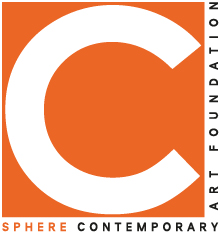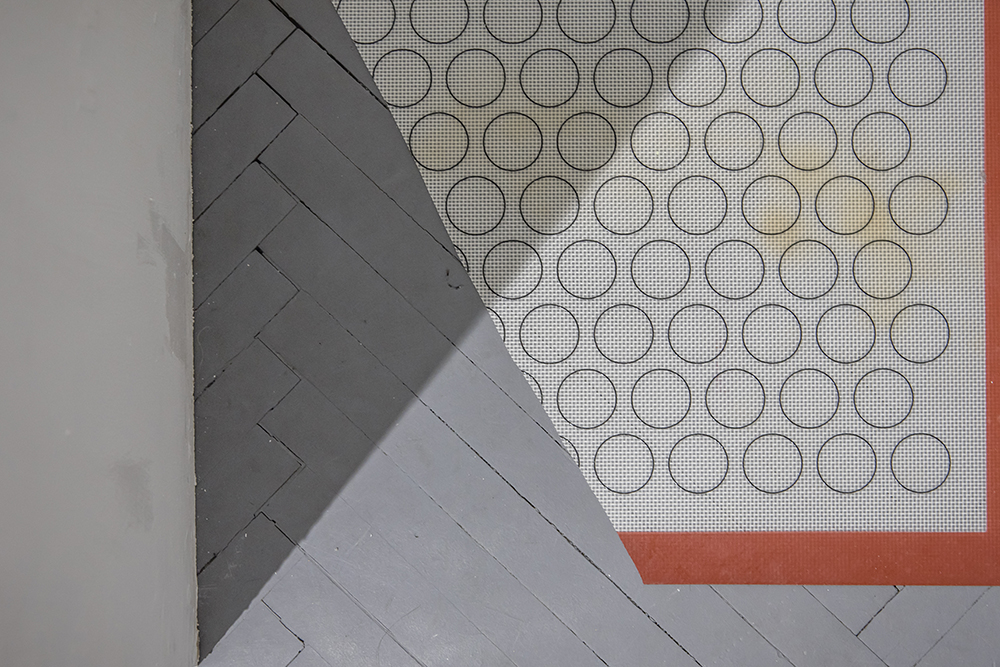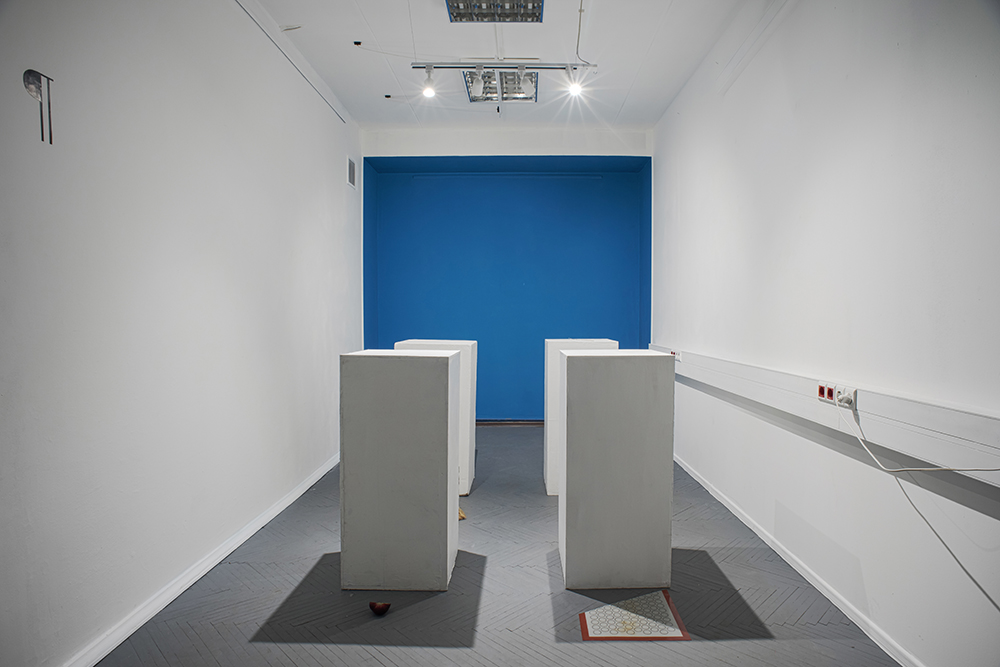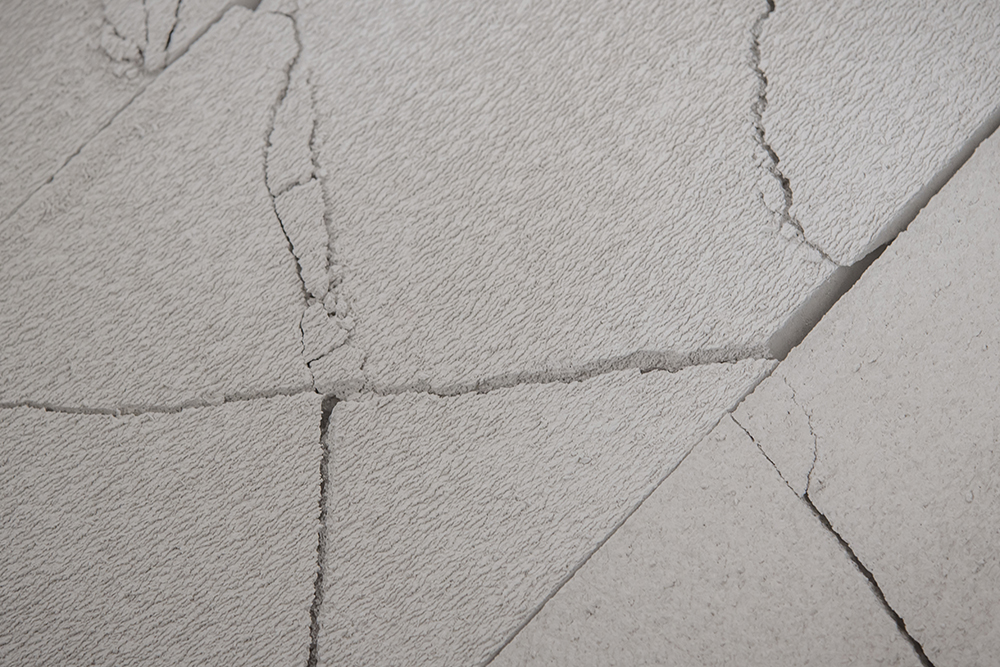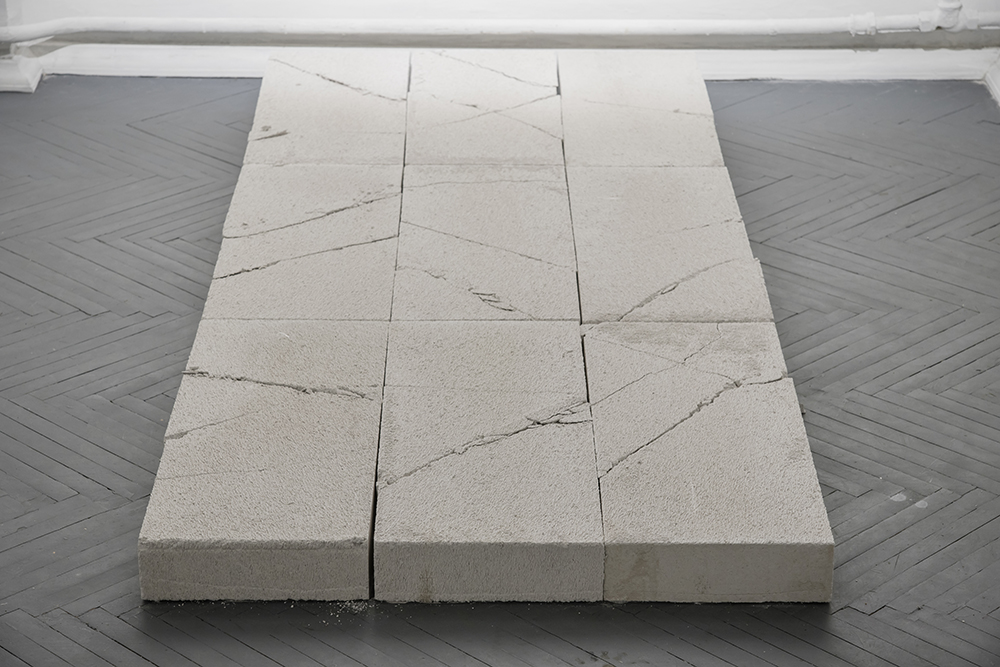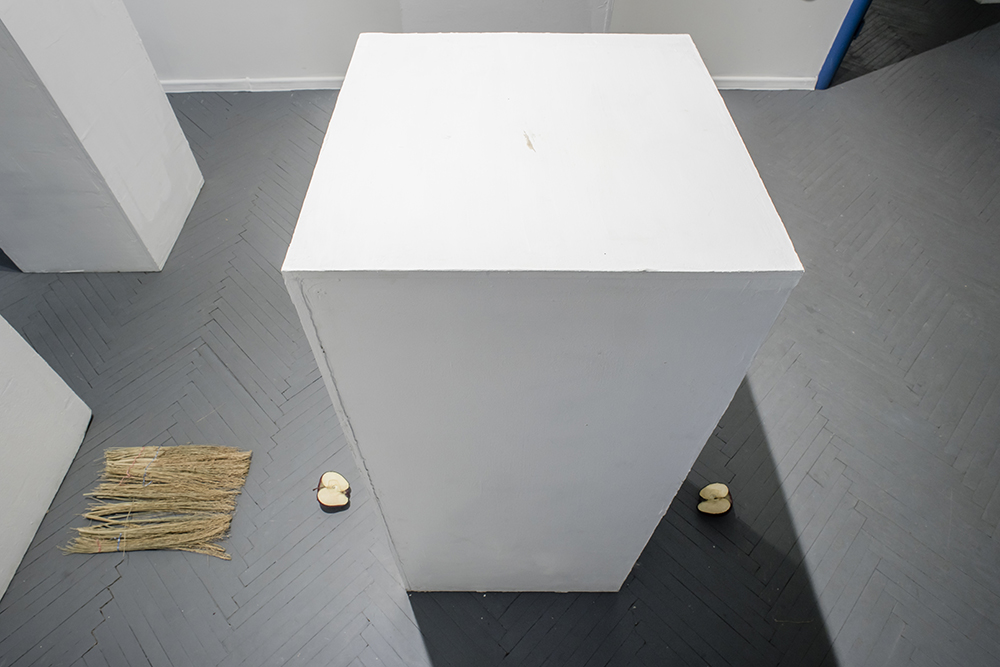About the Exhibition:
The exhibition takes place in the framework of Svetlana Baskova’s curatorial project For where two or three are gathered together, there am I in the midst of them.
Aesthetic analyst Egor Sofronov:
“Without the clean cut”: the flower, singled out as a thing of beauty, was chosen by Immanuel Kant in his Critique of Judgment as a paragon for formulating pure aestheticism.¹ The flower became only a metaphor, it was singled out through taste (language), i.e. it was turned into contemplation through purification. The flower as a substitute for beauty on the whole, singled out from its surroundings, was elevated to the heights, unattainable for the underpinnings of desire. As if separating the sense of taste from its physiological foundation, the cut extracts the flesh in order to produce uninterested feasibility without a purpose, as well as sterility and labourlessness of art.
The cut is used as a creative device in Ivan Khryashchikov’s personal exhibition: the spatiality, at first glance invisible, insignificant, impersonal, a gap between, as well as a temporal partition such as a pause, suspension, isolation. In the first room four ready-mades or found objects (a lavender branch, a rug, a broom, and an apple) are matched with podiums, whereas in the second room there is a broken tile. The withering in the case with the apple is timed, and the breaking of the tile complicates the cut with the arbitrariness of an accident, removing manual control, which, as we still suggest, is kept by the one who is making the cut. On the contrary, the randomness of the process of breaking invites lots of variations, doubled in the projection. In all of the cases cutting off the edges – “without” the cut, actually accompanying, being absent, or simply being used as a podium, – acquires positivity, although normally artistic completeness is determined by hiding or lowering it.
As an inscription on the wall – and the title of the exhibition – a typographical character is (not) given: the paragraph mark. It is from the unreadable partition of punctuation. Encoded in a technical designation, which is not endowed with its own sense in the alphabetic phonetic writing, ¶ is at the same time a precondition for the possibility of meaning, its organization, being a cut of supposedly natural continuity.
Now the questions and precautions are spread by the author in the air, in the space:
“Where is it? Could we say that the most important thing is in the center of the masses of all of the air in the room, but in that case door openings and windows will still be a problem. Where is the beginning of another room or a street? Shall we consider paint and dust part of the wall? The air is also present in the concrete of the walls. It should be separated from the air of the room”.
For where two or three are gathered together, there am I in the midst of them is a series of solo shows of emerging authors, collected under the artistic guidance of Svetlana Baskova with the assistance of Egor Sofronov. Three exhibitions in the self-organized space – the workshop of Anastasia Belaya – are focused on the attention to the means, which are not only movement-based but also verbal, as they invite the authors to submit collections of words which are brought forth as a spell or a polysemic message. Their positioning is specific for this small two-room space.
The title of the series is an allusion to Novalis, who paraphrased the Book of Matthew (18:20). The present formula, in its turn, goes back to the Indo-European language stratum (according to the Sanskrit quote, “Where two are present, Mitrá is always the third”), in which the all-seing theological vision and the procedure of the oath, as well as the law, derive from the figure of the witness, the third; in a broader sense, the structure of speech and meaning in general derive from that, too. The binary and tertiary dependence – with all its rearrangements – serves, among other things, the play of interrelations between the types of art (fine arts, verbal arts), communicative cooperation, and their interwovenness in the history of meaning
_________
¹ «Le sans de la coupure pure» is the title of one of the chapters in Jacques Derrida’s essay Parergon (1974) from the book La Vérité en peinture (1979) that includes a deconstructive reading of Immanuel Kant’s Critique of Judgment, with a particular focus on juxtapositions, rhetorical assumptions, and repression (as a key concept of psychoanalysis), most essential for art.
